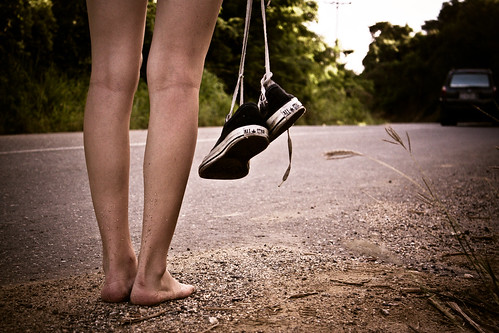What do I mean by “digital storytelling”? Part 1
See Bibliography for the references in this post
It’s crucial that I define what “digital storytelling” actually is right at the outset. There is another question higher up the chain , namely “what is storytelling”, which also needs to be answered but involves a much more complex answer so, purely for convenience I’m going to push it to one side for now.
If you want a short answer, try these. Digital Storytelling (DS) is:
“A short, first person video-narrative created by combining recorded voice, still and moving images, and music or other sounds.” (Centre for Digital Storytelling – http://www.storycenter.org
Gravestock and Jenkins put it equally briefly:
“Digital storytelling combines a narrative with images that support and enhance the narrative” (2009: 250)
Both these definitions derive from the origins of digital storytelling as a methodology. McLellan (2006) documents how DS partly emerged therough the efforts of Joe Lambert and Dana Atchley in California in the early 90s. They and others were keen to explore “how personal narrative and storytelling could inform the emergence of a new set of digital media tools” (CDS – http://www.storycenter.org/history.html).
The reason they were so interested was “the power of the personal voice for creating change.” (CDS). The focus of the San Francisco-based Centre for Digital Storytelling, that emerged from their work, was very much on empowering communities and individuals to participate in society.
“The premise for digital storytelling is very simple. It is designed to help people tell stories from their own lives that are meaningful to them and their audience, using media to add power and resonance, and create a permanent record.” (McLellan 2006, p70)
McLellan’s quote above highlights another important aspect of DS. It is about story first and digital second. This is further emphasised by Gravestock and Jenkins (2009, p252). The digital means are just that: means. The end is the telling of a story. This is helpful for widening the definition of what makes a digital story as I’ll explain later in part 2.
There are 2 examples from the UK that demonstrate this community voice approach to DS:
- Capture Wales
- Patient Voices
Capture Wales is a BBC Cymru Wales project for documenting “real-life stories made by people from across Wales” and as such is creating a braoder meta-narrative on life in Wales over the last few generations (Meadows 2003). I often use one particular example from this archive to introduce people to the concept of DS and although it uses archival footage rather than still images as most digital stories do, it gives a clear picture of how different digital media can be combined to tell a personal and meaningful story.
Patient Voices, started by Pip Hardy and Tony Sumner in 2003 is storytelling for a very particular social purpose. The stories are created by people undergoing medical treatment…
“…so that those who devise and implement strategy in health and social care, as well as the professionals and clinicians directly involved in care, may carry out their duties in a more informed and compassionate manner. ” (Patient Voices)
The examples of storytelling that can be found on CDS, Capture Wales and Patient Voices adhere to a particular format of DS which comes from the methodology of the projects that created them. The stories are created in workshops that take place place over several days where the story tellers are encouraged to form their stories, locate images and other media and combine them using software like iMovie or Moviemaker. This has led to a very recognisable form.
In part 2 I want to expand this idea of digital storytelling and show how it can encompass many different forms of narrative and technology.
In part 3 I’ll begin looking at the pedagogy of DS.

Leave a Reply